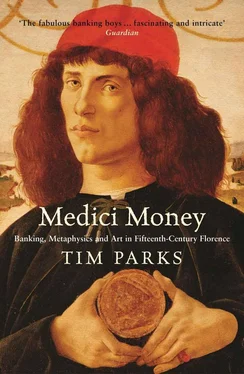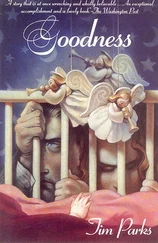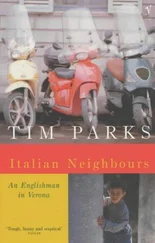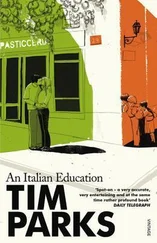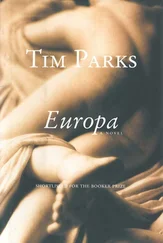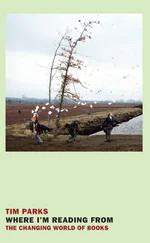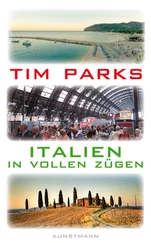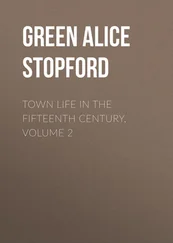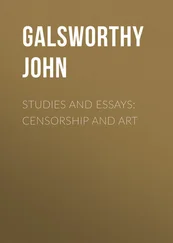
Giovanni di Bicci de’ Medici, as portrayed by Bronzino. The founder of the bank, Giovanni warned his children to “stay out of the public eye,” as if he had already appreciated the dangers of mixing politics and finance .
“Bank,” Italian banco (later banca ): a bench, table, or board, something to write on, to count over, to divide two people engaged in a transaction. That was all the furniture you needed. For some people a bank was just a tavola , a table. The Medici have their table in via Porta Rossa, they would say. Some things passed above board, and some below.
Since the bankers often did business together, they set up these tables in the same neighborhood — Orsanmichele, around what is now the Mercato Nuovo. There were about seventy all told. Halfway between Ponte Vecchio and the still-unfinished duomo , under shaded porticoes, or behind the massive doors of the palazzi , the moneymen stood or sat, wrapped in their long red gowns, bags of coins at their sides.
Above the table, on a green cloth, lay the big official ledger. The Exchangers’ Guild rules that every transaction must be written down. The banker has ink-stained fingers. “In the name of God and of profit!” the book begins. Or: “In the name of the Holy Trinity and of all the saints and angels of Paradise.” Every angle was covered.
The written check existed but was not the norm. Too risky. Every transaction must be ordered orally by the client in person and written down in his presence, with Roman numerals, in careful columns, because these are more difficult to alter. No sooner does money project itself through time and space than it generates vast quantities of writing. It becomes a thing of the mind, fluid and fickle. Write it down!
The merchant watches patiently as the quill scratches out his entry. Literacy is on the increase. The silence of men concentrating on numbers, dates, is invaded by the clatter of carts in the street, the cackle of caged poultry, the occasional shouts of the town crier. Downtown Florence is a busy place. In the Mercato Vecchio, a couple of hundred yards away, bales of silk and barrels of grain are changing hands. The bakers shovel their bread from the communal oven.
Once completed, the entry is read out loud. Any member of the Exchangers’ Guild found to have destroyed or altered his accounts is expelled without appeal. Whereas the Church’s rules may be open to debate, these are not. And when a banker dies leaving no one to carry on the business, his ledgers are held by the guild in a chest with three locks so that three officials, each with his own key, must all be present before the accounts can be consulted. Money, like mysticism, thrives on ritual.
Not all banks are in the same league. Where a red cloth hangs from the arch of the door, that’s a pawnbroker making modest loans in return for a declared interest rate and against the security of some object that can be resold if he is not repaid: a pair of wooden clogs, perhaps, decorated with embroidered cloth; or a wedding chest painted with biblical scenes; or the detachable brocaded sleeves for a lady’s dress. Such items are desirable. It is not a throwaway society.
Making no attempt to hide his profit, the pawnbroker, whether Christian or Jew, is a “manifest usurer” and so cannot belong to the Exchangers’ Guild and cannot be given a license to trade. But he can be fined. Or rather, they can. For this “detestable sin,” as the city’s government deems it, a fine of 2,000 florins a year is imposed on all the Florentine pawnbrokers as a group. Payment exempts them from any further tax or punishment. The theologians can debate whether this arrangement amounts to granting a license or not. Once again, language is used to perpetuate a contradiction rather than offer clarity. Is usury forbidden or isn’t it? Could it be that a manifest usurer is actually more honest than the nonmanifest variety? Deplored and indispensable, the pawnbroker, like the prostitute, continues to trade. Only after 1437 would Christians in Florence be banned from the business altogether. This eliminated a contradiction — if the Church says you mustn’t, then you really mustn’t — and focused all the poorer community’s resentment on the Jews.
Unlike the pawnbrokers, the banche a minuto were regularly signed-up members of the guild. These were small and strictly local banks with three main functions: They sold jewels, accepting payment by installment; they held tied deposits, on which they handed out annual “gifts” amounting to 9 or 10 percent; and they changed silver piccioli into gold florins, and vice versa. What’s that? Here, before tackling the banca grossa —the international bank, the merchant bank, the Medici kind of bank — we must get a grip on the currency. Or currencies.
The purpose of any currency, you would have thought, is to offer a unit of wealth that, when multiplied or divided, will buy anything for sale within a given geographical area. This is at once the wonder and danger of money, that in different amounts it can be made equivalent to almost anything. Hence we have copper coins that can be added up to make silver coins, silver that can be added up to make gold, or, in our day, the banknote, one dollar, five, ten, twenty, a hundred.
Not so in fifteenth-century Florence. Your silver coin, the picciolo , could not be added up to make a golden florin. They were separate currencies. The logic of this was that since the two coins were actually made of precious metals — indeed their worth depended on the intrinsic value of each mineral — the relationship between them could no more be fixed than the relationship between apples and oranges. Piccioli could only be changed into florins by the bank at the going rate for changing silver into gold.
Thus the reasoning. The reality was that into the very element that potentially frees us from class — the element that allows the hateful parvenu to pile up wealth and act as if his peasant family were as noble as mine — a radical divide was established. The picciolo was the currency of the poor, the salary of the worker, the price of a piece of bread. Luxury goods, wholesaling, international trade, these were the exclusive realm of the golden florin. By law. It was a situation not unlike that in the communist bloc some years ago where the rich and powerful used the dollar and the masses the zloty or rouble . A man who dealt in piccioli had a long way to go.
Across the banker’s green table you could make the move from one world to another, from silver to gold, modesty to riches. At the price of a small commission. Needless to say, the poor man’s money tended to be worth less and less. In 1252, when the florin was first minted, it could be bought with a lira of piccioli , which is to say 20 piccioli . Around 1500, you needed 7 lire of piccioli —i.e., 140. This was partly because the merchant who belonged to the Arte di Calimala (the Merchants’ Guild), the silk manufacturer who belonged to the Arte di Por San Maria (the Clothmakers’ Guild) earned in florins but paid salaries in piccioli . When profits were down, they encouraged the mint, which was controlled by the government, which in turn was formed mainly of men from these powerful guilds, to reduce the silver content in the picciolo . That way it would take fewer florins to pay the same salaries in piccioli to the unsuspecting poor. Archbishop Antonino condemned this practice. The archbishop was well loved for his constant work to improve the lot of the poor. He even went around personally to put bread in the hands of dying plague victims. But nobody was ever excommunicated for fiddling the currency, as they were when a debt to the pope wasn’t paid. Nor was anyone publicly whipped, or put in the stocks, as when a silk-worker stole some of the material she was weaving.
Читать дальше
